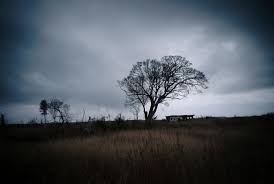
The road to the ancients, this week, is a narrow path to the north. It is composed of the dead, the suffering, the children and the elders and the pregnant women. It began with crushing noise followed by obliterating silence, and now … the return of black rain.
In Port-au-Prince, this week, people shudder, look at one another and whisper, “Nous sommes tous Japonais.” We are all Japanese.
We are not all Japanese, but we are all stunned. What are we to say, to think, to feel, to do as the images continue, as the news worsens, as our heads continue to shake in disbelief and our tears continue to sting?
The evacuation proceeds. Some say the evacuation is too cautious, too reactionary. When nuclear reactors are threatened, when there is a danger of radiation leakage, as clearly there is in Fukushima, remove the pregnant women, remove the children, remove the elders. Do it whether or not the reactors have blown, exploded, ignited. Do it in advance. That is a lesson of Chernobyl, especially for pregnant women. That is a lesson of Three Mile Island, especially for children.
The elders suffer particular hardships in the disaster in Sendai. First, Japan is the most rapidly aging country in the world, with the longest life expectancy. Women live to 86 years old, men to 79. More than 20 percent of Japan’s estimated population of 127 million is over 65 years old. 20 percent of Japan’s elders live in poverty. Elder care has been a crisis for some time now.
Second, Sendai is an area with many elders. Some came for the `peaceful’, and less costly, life. Others have lived their lives in the Tohoku region, in the northeast of Japan, and have watched as the younger generations moved south, to better jobs, to the metropole. The tsunami struck an area with a higher proportion of elders.
The earthquake, the tsunami, the flames and the radioactive leaks struck at the most vulnerable. They came down, and continue to come down, on the deep north of the country, which is also the interior, the inner recesses, even the dead-end.
On the 16 May 1689, at the age of 45, the poet Matsuo Basho set off, with a companion and friend Sora, to walk to Oku, on the island of Honshu. His travel journal, if it can be called that, Oku no Hosomichi, is said to be one of the most revered literary texts in Japanese history. Its title is variously translated as The Narrow Road to the Deep North, The Narrow Road to Oku, Narrow Road to the Interior. Upon his return to his home in Edo, Basho spent the next three years editing and revising the journal, which he completed in 1694. Then he died, and the book was published posthumously.
The journey began: “Days and months are travelers of eternity. So are the years that pass by. Those who steer a boat across the sea, or drive a horse over the earth till they succumb to the weight of years, spend every minute of their lives, travelling. There are a great number of ancients, too, who died on the road.”
At one point, Basho and Sora arrive at Sendai. It was a day of celebration, in which residents tied blue irises to the eaves and roofs of their homes and prayed for health. The travelers stayed for a few days, prayed, relaxed, sought out a famous painter Kaemon, and then moved on. They followed a map drawn by Kaemon and came to a monument, over a thousand years old, and paused:
“In this ever-changing world where mountains crumble, rivers change their courses, roads are deserted, rocks are buried, and old trees yield to young shoots, it was nothing short of a miracle that this monument alone had survived the battering of a thousand years to be the living memory of the ancients. I felt as if I were in the presence of the ancients themselves.”
On the road leading out of Sendai to the deep north, the poet Basho came face to face with time, with timelessness, and with the ancients. And he knew joy. What would he know today?
This week, the road to the ancients is once again a narrow path to the north.
(Photo Credit: Fukushima `Black Rain” by Soichiro Koriyama)